
Rice University, formally William Marsh Rice University, is a private research university in Houston, Texas, United States. It sits on a 300-acre campus adjacent to the Houston Museum District and the Texas Medical Center.

The Daily of the University of Washington, usually referred to in Seattle simply as The Daily, is the student newspaper of the University of Washington in Seattle, Washington, USA. It is staffed entirely by University of Washington students, excluding the publisher, advertising adviser, accounting staff, and delivery staff.
The Minnesota Daily is the campus newspaper of the University of Minnesota, published Monday and Thursday while school is in session, and published weekly on Wednesdays during summer sessions. Published since 1900, the paper is currently the largest student-run and student-written newspaper in the United States and the largest paper in the state of Minnesota behind the Minneapolis Star Tribune and the St. Paul Pioneer Press. The Daily was named best daily college newspaper in the United States in 2009 and 2010 by the Society of Professional Journalists. The paper is independent from the University, but receives $500,000 worth of student service fees funding.
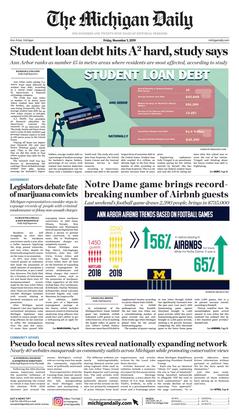
The Michigan Daily, also known as 'The Daily,' is the independent student newspaper of the University of Michigan published in Ann Arbor, Michigan. Established on September 29, 1890, the newspaper is financially as well as editorially independent from the university. The Daily is managed by two editors-in-chief and a business manager who oversee a staff of over 500 undergraduate students.

The Tulane Hullabaloo is the weekly student-run newspaper of Tulane University in New Orleans, Louisiana. As of 2023 Gabi Liebeler serves as 119th Editor-in-Chief. The Tulane Hullabaloo is also self-funded by selling advertisements to business owners and other organizations on the self-serve advertising platform. The Tulane Hullabaloo publishes its print edition once a month. It has received multiple Pacemaker Awards, the highest award in college journalism.
The Daily Bruin is the student newspaper at the University of California, Los Angeles. It began publishing in 1919, the year UCLA was founded.

Rienzi Melville Johnston was an American journalist and politician. He edited the Houston Post from 1885 to 1919, and served a 29-day term in the United States Senate in January 1913 after the resignation of Joseph Weldon Bailey. His term remains the fifth shortest in Senate history. Johnston was a member of the Texas Senate from 1917 to 1920, and also its President pro tempore from 1918.

The Daily Tar Heel (DTH) is the independent student newspaper of the University of North Carolina at Chapel Hill. It was founded on February 23, 1893, and became a daily newspaper in 1929. The paper places a focus on university news and sports, but it also includes heavy coverage of Orange County and North Carolina. In 2016, the paper moved from five days a week in print to four, cutting the Tuesday edition. In 2017, the paper began to print on only Monday, Wednesday, and Friday. In 2021, the paper began to print only on Wednesdays. All editorial content is overseen by student editors and a volunteer student staff of about 230 people. It's located at 109 E. Franklin St. in Chapel Hill, North Carolina, and it is the largest news organization in Orange County.
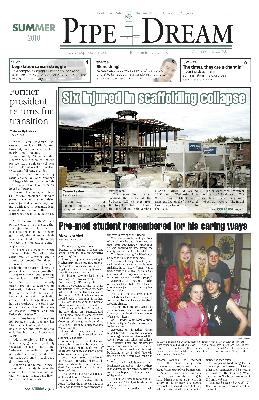
Pipe Dream is the student newspaper of Binghamton University in Vestal, N.Y. Content is published online throughout the week at bupipedream.com, as well as in print every Tuesday.
The Arizona Daily Wildcat is a student newspaper serving the University of Arizona. It was founded in 1899 as the Sage Green and Silver. Previous names include Arizona Weekly Life, University Life, Arizona Life and Arizona Wildcat. Its distribution is within the university and the Tucson, Arizona metropolitan area. It has a distribution of 20,000. Its website dailywildcat.com is updated regularly during the spring and fall semesters, while the print version is distributed Wednesday. During the summer months, it is published weekly as the Arizona Summer Wildcat. The Arizona Daily Wildcat was named Best College Newspaper by Princeton Review's THE BEST 361 COLLEGES, 2006 EDITION.
The Old Gold & Black is the student-run newspaper of Wake Forest University, named after the school's colors. The newspaper was founded in 1916 and is published in print every other Thursday, with the exception of school holidays and exam weeks. The Old Gold & Black's office is located on the fifth floor of the Benson University Center on Wake Forest's main campus.

The University Press, also commonly referred to as the UP, is the student-run magazine of Florida Atlantic University in Boca Raton, Florida, US. The magazine is published semimonthly during the fall and spring semesters. The current editor-in-chief is Savannah Peifer.
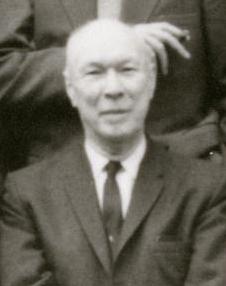
William Vermillion Houston was an American physicist who made contributions to spectroscopy, quantum mechanics, and solid-state physics as well as being a teacher and administrator. He became the second president of Rice University in 1946.
The Oakland Post is a weekly newspaper published in Oakland County, Michigan. It is a student-run, independent newspaper serving Oakland University. It is owned by the Oakland Sail, Inc. The current editor-in-chief (EIC) is Autumn Okuszka. Arianna Heyman preceded Okuszka, serving as EIC from spring 2023 through fall 2023. Other EICs included Gabrielle Abdelmessih (2022-2023), Aujenee Hirsch (2018-2019), Shelby Tankersley (2017-2018), Paige Brockway (2016-2017), Kristen Davis, Kaylee Kean, Oona Goodin-Smith (2014-2015),Scott Wolchek (2013-2014), Nichole Seguin, Kay Nguyen and Colleen Miller (2009-2010).
The Spectrum is the student-run newspaper of North Dakota State University in Fargo, North Dakota. The Spectrum has been in publication since 1896. Its oversight committee is the Board of Student Publications (BOSP) made up of a rotating group of four faculty members and five students and receives a portion of the student activity fee as a means to subsidize its production. The Board Of Student Publications is also responsible for hiring and firing the editor in chief.
Sammy the Owl is the official mascot for the Rice Owls of Rice University.
The FSView & Florida Flambeau is a for-profit newspaper owned by the Gannett Company that covers the on-campus events, happenings, and trends of the Florida State University as well as concerts, museum and art exhibits, movies, literature and poetry readings, and other events from the larger Tallahassee community. In early August 2006, the FSView made national news as being the first privately owned, college-oriented newspaper to be bought by a major newspaper chain.
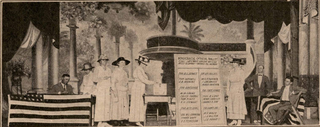
Women's suffrage efforts in Texas began in 1868 at the first Texas Constitutional Convention. In both Constitutional Conventions and subsequent legislative sessions, efforts to provide women the right to vote were introduced, only to be defeated. Early Texas suffragists such as Martha Goodwin Tunstall and Mariana Thompson Folsom worked with national suffrage groups in the 1870s and 1880s. It wasn't until 1893 and the creation of the Texas Equal Rights Association (TERA) by Rebecca Henry Hayes of Galveston that Texas had a statewide women's suffrage organization. Members of TERA lobbied politicians and political party conventions on women's suffrage. Due to an eventual lack of interest and funding, TERA was inactive by 1898. In 1903, women's suffrage organizing was revived by Annette Finnigan and her sisters. These women created the Texas Equal Suffrage Association (TESA) in Houston in 1903. TESA sponsored women's suffrage speakers and testified on women's suffrage in front of the Texas Legislature. In 1908 and 1912, speaking tours by Anna Howard Shaw helped further renew interest in women's suffrage in Texas. TESA grew in size and suffragists organized more public events, including Suffrage Day at the Texas State Fair. By 1915, more and more women in Texas were supporting women's suffrage. The Texas Federation of Women's Clubs officially supported women's suffrage in 1915. Also that year, anti-suffrage opponents started to speak out against women's suffrage and in 1916, organized the Texas Association Opposed to Woman Suffrage (TAOWS). TESA, under the political leadership of Minnie Fisher Cunningham and with the support of Governor William P. Hobby, suffragists began to make further gains in achieving their goals. In 1918, women achieved the right to vote in Texas primary elections. During the registration drive, 386,000 Texas women signed up during a 17-day period. An attempt to modify the Texas Constitution by voter referendum failed in May 1919, but in June 1919, the United States Congress passed the Nineteenth Amendment. Texas became the ninth state and the first Southern state to ratify the Nineteenth Amendment on June 28, 1919. This allowed white women to vote, but African American women still had trouble voting, with many turned away, depending on their communities. In 1923, Texas created white primaries, excluding all Black people from voting in the primary elections. The white primaries were overturned in 1944 and in 1964, Texas's poll tax was abolished. In 1965, the Voting Rights Act was passed, promising that all people in Texas had the right to vote, regardless of race or gender.
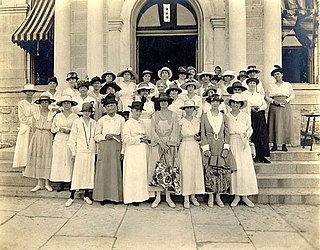
This is a timeline of women's suffrage in Texas. Women's suffrage was brought up in Texas at the first state constitutional convention, which began in 1868. However, there was a lack of support for the proposal at the time to enfranchise women. Women continued to fight for the right to vote in the state. In 1918, women gained the right to vote in Texas primary elections. The Texas legislature ratified the 19th amendment on June 28, 1919, becoming the ninth state and the first Southern state to ratify the amendment. While white women had secured the vote, Black women still struggled to vote in Texas. In 1944, white primaries were declared unconstitutional. Poll taxes were outlawed in 1964 and the Voting Rights Act was passed in 1965, fully enfranchising Black women voters.

The Ion District, Ion Innovation District, or Rice Innovation District, is a technology park and innovation district in Midtown Houston which was established as a joint initiative between Rice University and the City of Houston. It has also been called the South Main Innovation District. The district's central hub and first building is the Ion, which opened in 2021 after owner Rice Management Company (RMC) converted it from a former Sears store. The building houses coworking and office spaces, business incubators and accelerators, classrooms, a prototyping lab, investor studio, and restaurants. Current tenants include Chevron Technology Ventures and Microsoft. The district also includes Greentown Labs Houston, a business incubator focused on climate technology and sustainable energy, and a large outdoor plaza.












